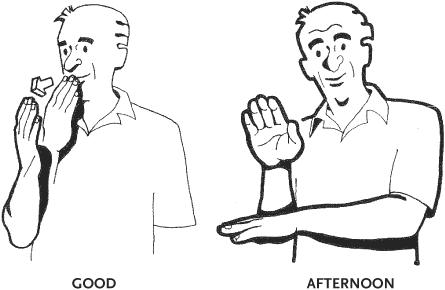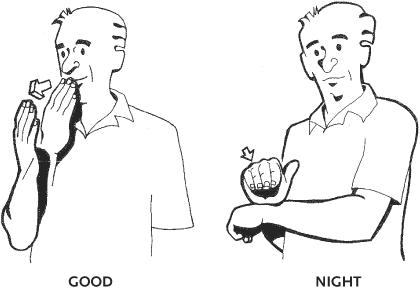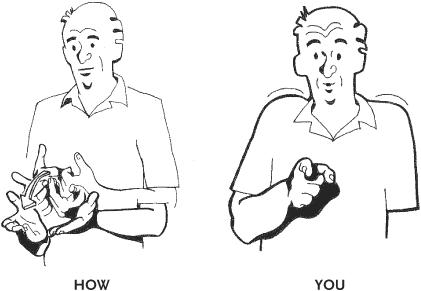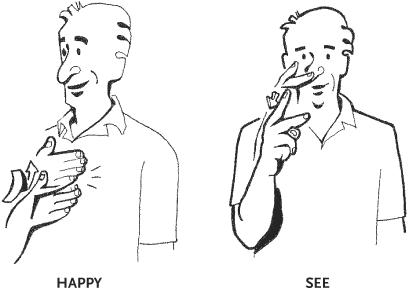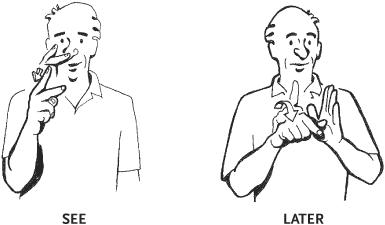The American Sign Language Phrase Book (16 page)
Read The American Sign Language Phrase Book Online
Authors: Lou Fant,Barbara Bernstein Fant,Betty Miller


The WILL sign is often confusing because it expresses both future tense and intention.

A final word about signs in the final position is that if you want to emphasize something, put it at or near the end of the statement. The last thing seen is the thing best remembered.
Often signs are repeated or moved in a way that shows plurality.
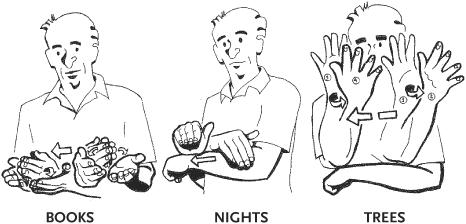
When a sign does not lend itself to this kind of repetition or pluralizing movement, then signers use such signs as MANY, FEW, and SOME, or they use specific numbers such as NINE or FIFTY.
When deaf people are talking to each other they rarely use each other's names. For example, "How are you, Bob?" becomes simply, "How you?" If, however, the signer asks the watcher about another person, then the signer uses that person's name. ("How is Bob?")
A person's name must be fingerspelled, but most deaf people also have name-signs. A name-sign is one that stands for that person, not for the name. Two people with the same name will have different name-signs. When you first meet a deaf person, you fingerspell your name. You tell him or her your name-sign only if he or she asks. Usually name-signs are not asked for until the relationship develops beyond that of a casual acquaintance.
Titles such as "Mrs.," "Dr.," and "Rev." are fingerspelled and used only when the person is being introduced. You never use them when you are talking directly to the person. "How are you, Dr. Smith?" becomes simply "How you?"
A discussion of articles (
a
,
an
,
the
) in American Sign Language is beyond the scope of this book. Please refer to a book on ASL linguistics for more detailed information.
The acquisition of a spoken language involves principally learning grammar, pronunciation, and vocabulary. Except for pronunciation, the same applies to learning ASL. Forming signs clearly is the equivalent of pronunciation in ASL. Clarity in signing depends upon accuracy in making the sign, smoothness in execution of the sign, flow from one sign to the next without jerky or hesitant movements, the use of facial expressions, the use of head and body movements, and the proper use of space. The only way to develop these is through using the language with deaf people. They will correct you when you err, and by watching them carefully you will correct and fine-tune yourself.
Greetings, Salutations, and
Everyday Expressions
Copyright © 2008 by the Estate of Lou Fant and Barbara Bernstein Fant. Click here for terms of use
.


